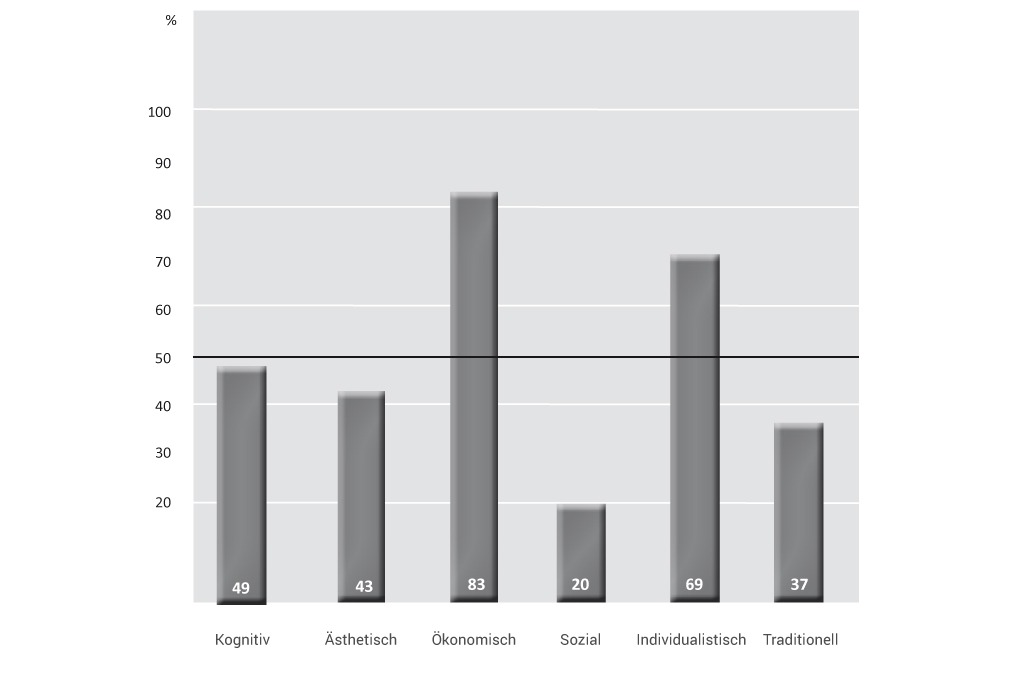
Motivation graphic
The motivation graphic captures 6 job-related motives, which can also be referred to as a person’s personal interests and values or talents.Cognitive motivation rewards striving to learn new things. Organizing and systematizing knowledge is the focus of people with high cognitive value. People with this attitude do not judge the beauty or usefulness, but rather try to observe, research and reason.
Aesthetic motivation is shown, among other things, interested in artistic life content. People with primarily artistic motives strive for self-fulfillment, harmony and grace.
Economic motivation rewards the use of an investment (time, energy, resources). The focus is clearly on entrepreneurial interest and achieving results. The destination is more important than the journey. Economically motivated people generally ask themselves the question “What’s in it for me?”
Social motivation concerns unselfish, often selfless, action intended to help others rather than seeking benefits for oneself. People with high social motivation naturally feel love for people.
Individualistic motivation is reflected in the pursuit of power, leadership, control, influence and prestige. Studies show that managers in particular often have a high individualistic value.
Traditional motivation predominates among people for whom social and cultural belonging and a sense of purpose seem more important than, for example, B. material goods or self-realization. Unity, order and tradition best characterize this value. People with high traditional values look for a system in their lives, which can be found, for example, in an authority that defines rules and regulations.

